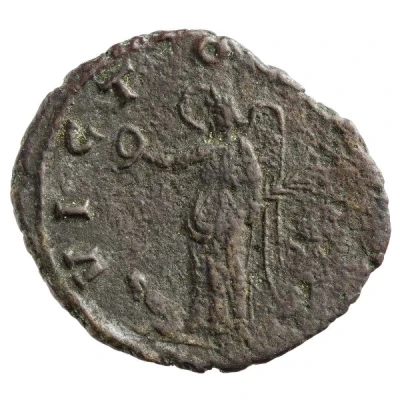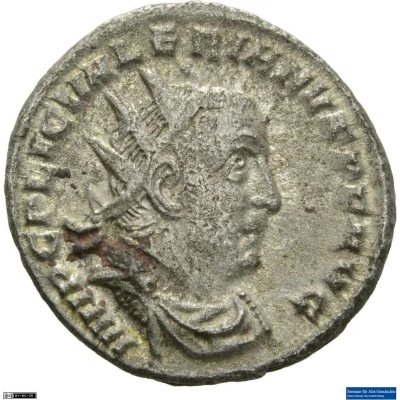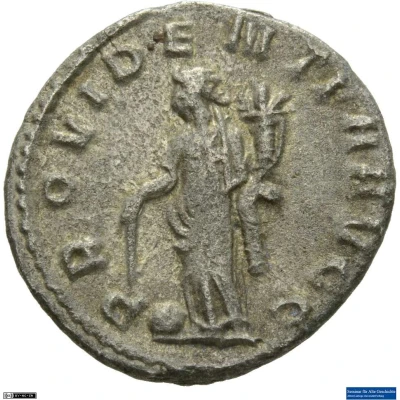


© Münzkabinett der Universität Göttingen (CC BY-NC 4.0 DE)
Antoninianus - Valerianus VICTORIA AVGG; Victory
| Silver | 3 g | 20.3 mm |
| Issuer | Rome › Roman Empire (27 BC - 395 AD) |
|---|---|
| Emperor | Valerian (Publius Licinius Valerianus) (253-260) Gallienus (Publius Licinius Egnatius Gallienus) (253-268) |
| Type | Standard circulation coin |
| Years | 255-256 |
| Value | Antoninianus (1) |
| Currency | Antoninianus, Reform of Caracalla (AD 215 – 301) |
| Composition | Silver |
| Weight | 3 g |
| Diameter | 20.3 mm |
| Shape | Round (irregular) |
| Technique | Hammered |
| Demonetized | Yes |
| Updated | 2024-10-05 |
| Numista | N#286004 |
|---|---|
| Rarity index | 95% |
Reverse
Victory, winged, draped, walking or standing left, holding wreath in right hand and palm in left hand.
Script: Latin
Lettering: VICTORIA AVGG
Translation:
Victoria Duorum Augustorum.
Victory of the two emperors (Augusti).
Comment
Mass varies: 1.974–2.85 g;Diameter varies: 20.91–21.05 mm;
Example of this type:
Münzkabinett der Universität Göttingen
Source:
Online Coins of the Roman Empire (OCRE)
Interesting fact
The Antoninianus coin, which was issued during the reign of Valerianus (255-256 AD), was a significant departure from previous Roman coins in that it was made of silver, rather than the more common bronze or copper. This was a deliberate choice made by the Roman government to increase the value of the coin and to combat inflation, which had become a significant problem in the empire at the time. The use of silver in the Antoninianus coin was a sign of the empire's wealth and power, and it helped to establish the Roman Empire as a major economic force in the ancient world.

